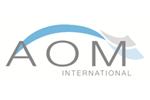 AOMi chief executive Richard Jeffery explores how an increased operations management capability within the back office can help outsourced service providers meet tougher targets and service level agreements.
AOMi chief executive Richard Jeffery explores how an increased operations management capability within the back office can help outsourced service providers meet tougher targets and service level agreements.
In recent years, more and more businesses have turned to partner organisations to provide cost-effective ways to manage key processes such as customer service, technical support, IT services and even sales, marketing and revenue generation. Post-recession however, getting this work – and keeping hold of it – increasingly requires a commitment to deliver or improve already high service levels, in some cases at a lower budget.
For the service provider, operating within tighter margins invariably means taking a closer look at where there is scope to streamline the operation. Often, streamlining efforts focus on technology or process improvement – and in doing so can miss a valuable opportunity.
Increasingly, major BPO providers and their customers are finding equivalent and additional benefits in increasing their capacity management capability. Here’s how…
Many outsourced customer service operations operate inefficiently because they don’t have any way to measure current performance at a granular level. As such, they don’t detailed information about how much time is spent on back office tasks and have difficulties forecasting periods of peak demand.
‘20% ‘latent capacity’ hidden in most BPO operations’
This limited end-to-end process visibility and the sometimes complex drivers of SLAs leads to many back office operations operating as highly compartmentalised organisations with little resource flexibility, making resource capacity management almost impossible. In fact, experience repeatedly shows that there is commonly 20% ‘latent capacity’ hidden in most BPO operations that have not adopted leading practices in back-office capacity management.
With the need for efficiency savings now paramount in the battle to win and retain business, organisations are increasingly seeking the same visibility, productivity and performance in their back office as they would in the front-line contact centre and elsewhere.
To achieve this, they must look at the workload holistically and at an organisation-wide level to better understand and forecast their workload and deploy capacity accordingly. Here, the combination of back office workforce optimisation software with work and capacity management and training can be highly effective in bringing about the change in mindset internally, as well as the necessary visibility required for effective change.
For the Multi-Client division at Capita, a leading UK provider of business process management and integrated professional support service solutions, this holistic approach to demand and capacity management within the back office enabled the firm to radically improve the way it plans, controls and delivers its services.
A number of factors culminated in the requirement for change in operation. Firstly, new contractual terms required the division to deliver the same quality of service at the same cost, while shortening service levels from five to three days. Effectively, this meant delivering a better service, with the same number of people.
In this context, the challenge was to implement a controlled transition to operational practices that would enable the operation to work with tighter service levels – all within an ambitious timescale.
To meet changing demands and build the capability to manage future challenges, Capita prioritised the development of the current operations management approach and the need for “a shared solution across accounts”.
Having embedded back office workforce optimisation software, training and methodologies within the organisation, Capita is now able to plan, control and deliver its services with new certainty and exploit opportunities as they arise. This has included, for example, reducing regulatory risk by cross-training staff in critical specialisms and training staff for work with new clients.
 “It’s not about throwing more staff at the issue in order to achieve the service levels and avoid fines,” said Capita Multi-Client MD Mark Randall. “Nor is it about reducing quality. What we have done is get a better understanding of team and individual performance. We have thereby driven –and continue to drive – performance improvements.”
“It’s not about throwing more staff at the issue in order to achieve the service levels and avoid fines,” said Capita Multi-Client MD Mark Randall. “Nor is it about reducing quality. What we have done is get a better understanding of team and individual performance. We have thereby driven –and continue to drive – performance improvements.”
Following the changes, productivity has increased the speed of service delivery, with work delivered in three rather than five days. It has also improved individual performance management and reduced overtime by 50% through improved productivity.
In an era where enterprises expect far more from those delivering outsourced contracts, the bottom line is that professional support firms can no longer afford to juggle the need to reduce costs, maintain the quality of their services and increase the speed of delivery. Often, the instinct is to rush for a system or process solution and this can certainly be helpful. However, as providers such as Capita have demonstrated, impressive improvements are also being achieved through intelligent, people-focused approaches to capacity management.
AOMi Chief Executive Richard Jeffery
For additional information please visit Click Here




